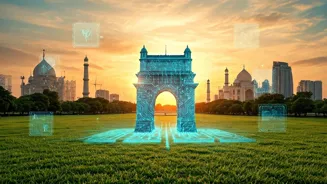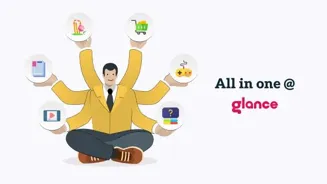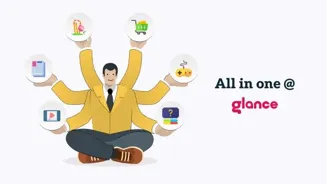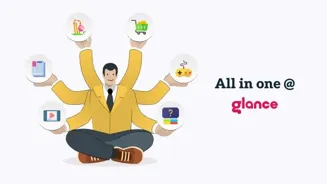Exploring How Smart Cities Are Revolutionizing Urban Living: Discover the Technology Driving Urban Development. Read more
India's urban landscape is undergoing a massive transformation, with the Smart Cities
Mission aiming to create sustainable and citizen-friendly urban centers. But what exactly goes into building a smart city?
It's not just about fancy buildings and wide roads; it’s about integrating technology to improve the quality of life for residents and enhance the efficiency of city operations. Let's take a look at the technologies driving this urban revolution.
Smart cities optimize services with IoT, improving traffic flow and resource allocation
One of the fundamental aspects of a smart city is the Internet of Things (IoT). IoT involves connecting everyday objects – from traffic lights to waste bins – to the internet, allowing them to collect and share data.
Think of sensors on streetlights that automatically adjust brightness based on ambient light, saving energy. Or smart water meters that detect leaks, preventing water wastage. This data is then analyzed to optimize resource allocation and improve city services.
For example, data from traffic sensors can be used to optimize traffic flow, reduce congestion, and improve travel times for commuters. This helps people get to their offices or homes more quickly.
Data analytics empowers smart cities through insights from IoT data
Data analytics is the brain behind a smart city. The massive amounts of data generated by IoT devices are fed into sophisticated analytics platforms. These platforms use algorithms and machine learning to identify patterns, predict trends, and generate actionable insights.
For instance, analyzing crime data can help law enforcement agencies deploy resources more effectively. Similarly, analyzing healthcare data can help city officials identify and address public health issues.
The insights derived from data analytics enable city administrations to make informed decisions and implement targeted interventions, making urban life better for everyone. Proper data analysis is the key to solving city problems more quickly.
Smart grids optimize energy distribution, integrate renewables for sustainable cities
Smart grids are revolutionizing the way cities manage their energy. These grids use sensors and advanced control systems to monitor and optimize energy distribution. They can detect and isolate faults, reducing power outages and improving grid reliability.
Smart grids can also integrate renewable energy sources like solar and wind power, making cities more sustainable. Imagine a city where power outages are a thing of the past, and energy is sourced from clean and renewable sources. This is the vision of smart grids.
These grids are essential for making cities more environmentally friendly and energy efficient. By using smart grids, cities can reduce their carbon footprint and promote sustainable development.
Smart transportation systems optimize commuting efficiency with technology
Smart transportation systems are designed to make commuting easier and more efficient.
These systems use a combination of technologies like GPS, sensors, and real-time data to manage traffic flow, optimize public transportation routes, and provide commuters with real-time information about traffic conditions and public transportation schedules.
Think of apps that show you the fastest route to your destination or buses that adjust their routes based on real-time traffic conditions. Smart parking systems can also help drivers find available parking spaces quickly, reducing congestion and saving time.
Overall, smart transportation systems aim to make transportation more efficient, convenient, and sustainable.
E-governance platforms enhance citizen interaction with city governments, promoting transparency and accountability
E-governance platforms are transforming the way citizens interact with their city governments. These platforms provide citizens with online access to a wide range of services, from paying property taxes to applying for permits.
They also enable citizens to report issues like potholes or broken streetlights. E-governance platforms make it easier for citizens to engage with their local governments and hold them accountable. This promotes transparency and improves the responsiveness of city administrations.
Citizens can now access government services from the comfort of their homes, saving time and effort. By making government services more accessible, e-governance platforms empower citizens and promote civic participation.
Building smart cities enhances urban living with technology
Building a smart city is a complex undertaking that requires careful planning, collaboration, and investment. However, the potential benefits are enormous. Smart cities can improve the quality of life for residents, enhance the efficiency of city operations, and promote sustainable development.
While each city has its own unique challenges and opportunities, the core technologies and principles remain the same. As India continues its journey towards urbanization, smart cities will play an increasingly important role in shaping the future of urban living.
By embracing technology and innovation, Indian cities can become more livable, sustainable, and resilient. Ultimately the goal of a smart city is to make our lives better and simpler.
AI Generated Content. Glance/InMobi shall have no liability for the content











